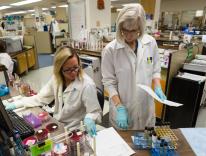Like most people who think it’s a bad idea to spray homeless people with water in order to move them along, I found myself rather surprised by last week’s news that the cathedral of the Archdiocese of San Francisco had been doing just that for the past two years. The archdiocese’s response was swift. The day the story broke it hired a crisis communications consultant, began dismantling the homeless irrigation system, and issued a statement that included an apology. Obviously when a Catholic church is discovered to have been regularly dousing the poor with water—for whatever reason—it has a major PR problem. Facing such a crisis, a church’s best bet is to admit the mistake, explain how it happened, and offer sincere apologies to the offended. In other words, stop digging. But that’s not exactly what the Archdiocese of San Francisco did, and that’s why it’s hard to accept the words it arranged in the form of an apology. How might it have been more convincing? Let’s count the ways.
1. Lead with the apology. It’s never a good idea for a Christian organization to start spraying down the least of these. But the archdiocese’s statement buries its apology in the penultimate paragraph—well after it rehearses the many important acts of charity it offers to the neediest San Franciscans. The archdiocese may well be “the largest provider of services for the homeless,” as the news release explains in its first sentence—and that is certainly a fact worth noting. But when a transgression of this magnitude becomes known, the risk of scandal is real—the first order of business is remorse, not self-defense.
2. Apologize for the wrongdoing, not how others perceived it. “We are sorry that our intentions have been misunderstood and recognize that the method used was ill-conceived.” That sounds too much like a We’re-sorry-if instead of a We’re-sorry-that. It’s good that—two years into its homeless-relocation program—the archdiocese realizes that its method was mistaken, but it’s beyond baffling that it was ever tried in the first place. The archdiocese argues that its motives were pure, but there’s no way to justify discouraging human beings—especially the down-and-out—from congregating in undesriable areas by spraying them with water. It denigrates them, endangers their health, and gives the appearance of laziness.
3. Give an account of your mistake. The archdiocese provides only a partial explanation. It got the idea from “city resources,” and only went this route as a kind of last resort, “after other ideas were tried and failed.” But the archdiocese has not said what those other ideas were (and its spokesman did not reply to me when I asked). As Dominic noted in his report, this was a major plumbing project that couldn’t have been cheap. Was it more or less expensive than those other ideas? And if homeless people adapted to the intervals of dousing (every thirty to sixty minutes the water flowed for a little over a minute)—with umbrellas and other gear, according to local reports—then it’s clear that irrigating them wasn’t working. Why was the system maintained for two years?
4. Make sure your explanations add up. The archdiocese’s don’t. It explains that the homeless-sprinklers were installed partly to clean up after the mess left by the homeless (“needles, feces, and other dangerous items”). But it obviously wasn’t working, nor should anyone have believed that it would. The stream of water was just too narrow and too weak—and no drainage system was installed. Instead of dry needles, crack pipes, and fecal matter, the cathedral was left with wet needles, crack pipes, and fecal matter. And also wet homeless people.
5. Avoid appealing to the children. “The problem was particularly dangerous because students and elderly people regularly pass these locations on their way to school and Mass every day,” Auxiliary Bishop William Justice said during a press conference. The archdiocese argues that it only wanted to shoo the homeless out of the alcoves to “other areas of the cathedral,” “not to remove those persons.” To where? Justice suggested that one of the drier areas the homeless might move to was a partially covered parking lot. But he also said that children and elderly people regularly use the parking lot. So was the archdiocese more concerned about foot traffic? That doesn’t make much sense either, because the cathedral sits on a large lot, well back from the street. It seems unlikely that kids would encounter the homeless or their refuse on their way to the nearby school.
The homeless sprinkler system “has had the opposite effect from what it was intended to do, and for this we are very sorry,” the statement concludes. Of the archdiocese’s regret, I have no doubt. But as for the rest of its explanation, I’m afraid it’s all wet.
